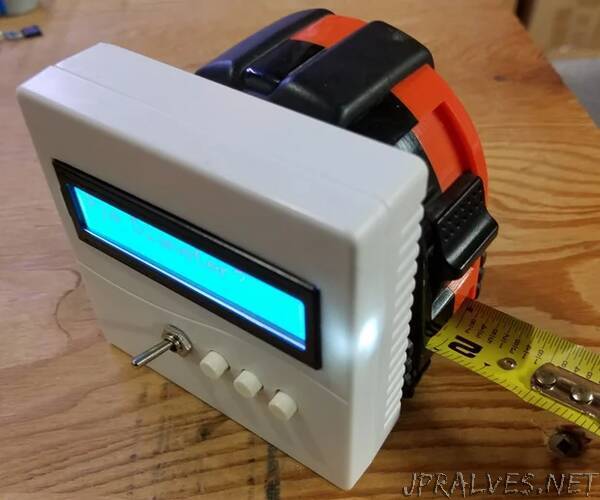
“Have you ever served pie and had kids complain that someone else got a slightly bigger piece? Or maybe you want to create a cool 7-sided polygon from a boring round cake. Well now there is a way to scientifically ensure that your pie slices are cut to exactly the same size or that your cake polygon is perfectly dimensioned all within 1/16 inch accuracy! I speak, of course, of the Pi Powered Pie Partitioning and Polygon Pruning Tool. While you might expect to see this space-age marvel show up on Shark Tank or late night TV ads for tens of dollars, Im here to show how you can make your own for just a fraction of that cost. Even better, it will become the envy of your neighborhood and help to make your parties an A-list rated invitation.
1. Turn on the electronics. It will prompt for the circle diameter.
2. Use the tape measure to get the circle diameter in inches and sixteenths of inches.
3. Enter the diameter measurement into the electronics.
4. Press and hold one of the data entry buttons for greater than one second.
5. The electronics will prompt for the number of slices. Note that the sixteenths button is disabled during this step.
6. After entering the number of slices, press and hold one of the data entry buttons for greater than one second.
7. The electronics will display the chord length. Use that number and the tape measure to mark the edge of the circle.
8. Slice the pie or prune the cake based on the marks you made on the edge.
9. If you want to do another calculation, press and hold one of the data entry buttons for greater than one second.
The basic hardware consists of a standard tape measure attached to the electronic “brains” of the tool. The electronics box is made up of a battery powered ATtiny85 microcontroller that is connected to data entry switches and an LCD display. Because of the limited number of pins on the ATtiny85, the LCD is driven by an I2C 2-wire interface. Attached to the LCD is a common I2C-to-parallel LCD driver module. Power is provided by a 14500 Li-ion battery. It fits a standard AA battery holder and can be recharged using most 18650 chargers. A small booster board increases the battery voltage to the 5 volts needed by the electronics.
There are three normally open, momentary contact switches used for data entry. The left switch is for 10’s, the middle switch is for 1’s, and the right switch is for 1/16’s. The numbers for each switch will automatically go back to zero after reaching the maximum value. Note that the 1/16’s do not automatically overflow to the 1’s column and the 1’s do not automatically overflow to the 10’s column. All measurements are in inches.”
